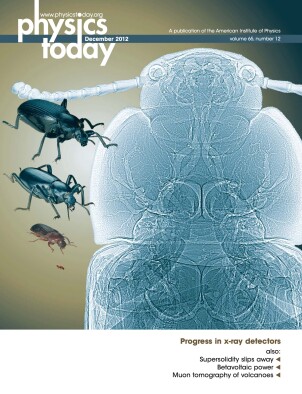An optofluidic random laser
DOI: 10.1063/PT.3.1814
An optofluidic random laser. Optofluidics is a burgeoning area of research seeking to combine microfluidics and optics to produce optical elements that are versatile, controllable, and readily incorporated in fluid-based “lab-on-a-chip” devices. The pressure of a fluid flowing through a microchannel can change the shape of an adjacent soft lens, for example, and a fluid’s composition can modify the channel’s refractive index. Among the many applications being pursued are optofluidic lasers. Lasers at any scale require some mechanism—such as mirrors or an extended diffraction grating—to produce sufficient stimulated emission. Disordered media provide an alternative way to achieve gain: The disorder causes photons to scatter multiple times, getting amplified each time. Shivakiran Bhaktha (Indian Institute of Technology Kharagpur) and colleagues have now demonstrated random lasing in a microfluidic channel. The disorder in their 3-mm-long, 28-µm-deep channel arises naturally in the photolithographic fabrication process: Finite-sized pixels in the photomask pattern, imperfect mask adhesion, and diffraction all contribute to micron-scale roughness in the channel’s transparent polydimethylsiloxane (PDMS) walls (as seen in this profilometer image). Flowing through the microchannel is an organic dye—one also used in tabletop dye lasers—that emits yellow photons when pumped by green laser light. For sufficient pump power, the multiple scattering of the emitted photons triggers lasing. The researchers note that the lasing threshold is comparable to that of optofluidic lasers employing external cavities, and thus optofluidic random lasers offer an interesting, cheap alternative to technologically demanding cavity lasers. (B. N. S. Bhaktha et al., Appl. Phys. Lett. 101, 151101, 2012.)

